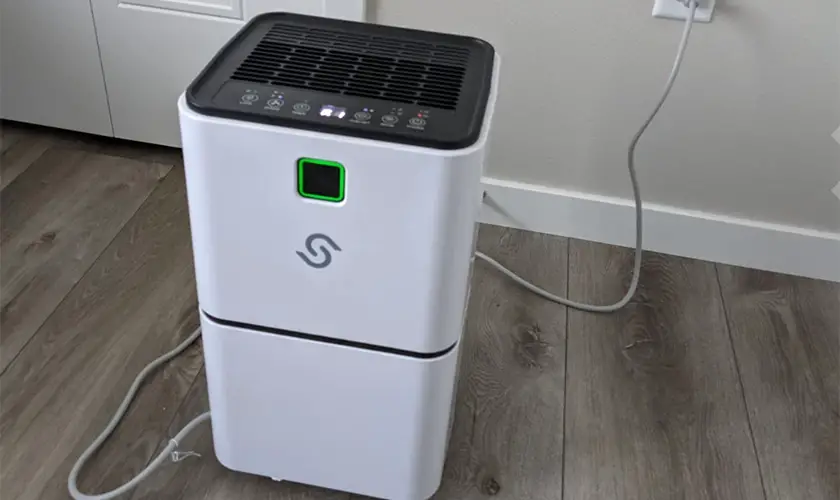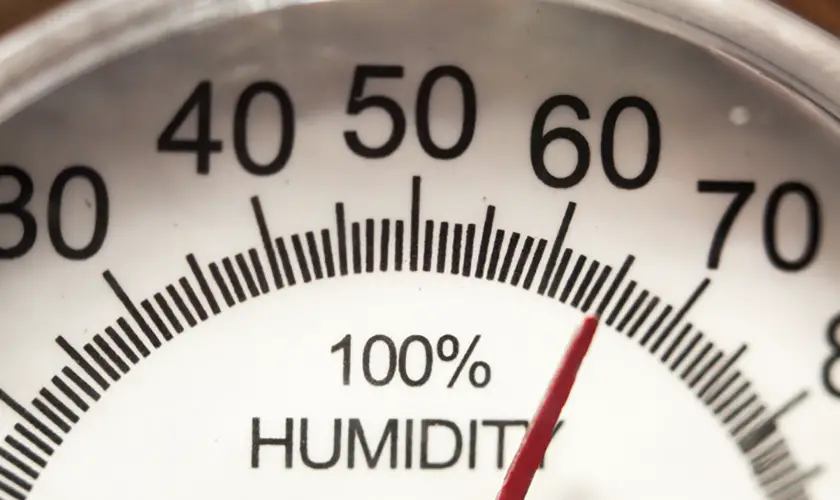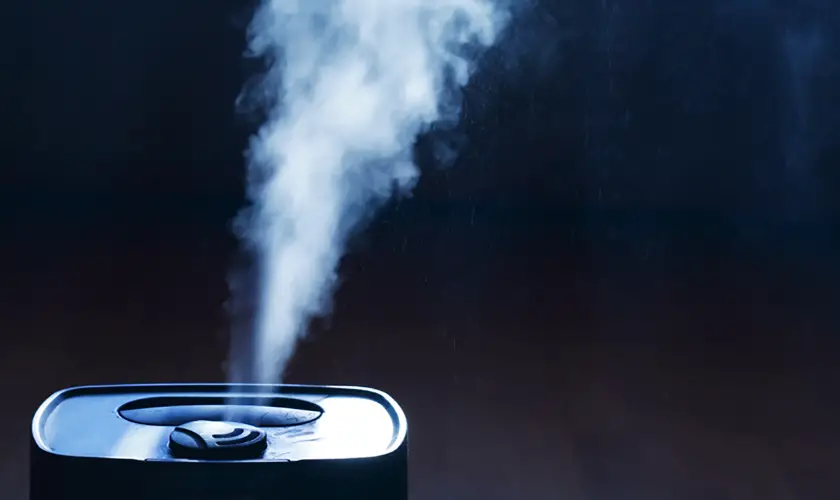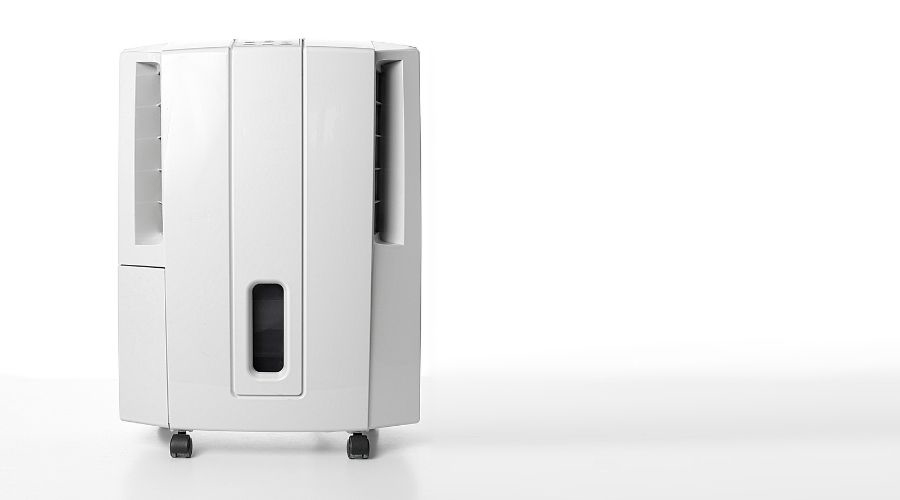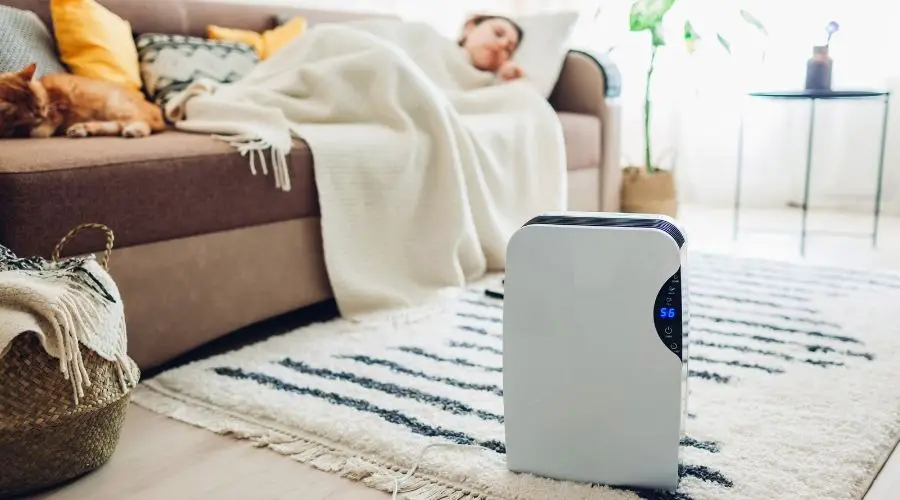
Nothing is worse than the product you purchased not working correctly. It significantly impacts your day-to-day lives, especially if you are using it for a specific reason, such as making your house feel less humid.
So, how do you go about diagnosing a problem in the first place with your dehumidifier? Let us find out the reasons why.
There are several aspects of how a dehumidifier works that can go faulty. More importantly, there are different kinds of dehumidifiers. However, the reasons why your dehumidifier is not working are:
- Moisture issues
- Capacity limitations
- The humidifier needs maintenance
- It is placed in the wrong area
- The temperatures are too low
- Your dehumidifier is the wrong size
- There is a malfunction in parts
We will discuss how you can un-dampen your situation and the room where the dehumidifier is into the boot. This article aims to, at the very least, point you in the right direction so you can get a solution to the problem at hand.

What Would Cause A Dehumidifier Not To Collect Water?
Many things can cause issues in your unit not functioning as you need. One of the biggest things you can do to ensure you are not personally one of those issues would be going over the dos and don’ts of your owner’s manual.
If you have made it past that side of things, then going above and beyond the norm is the next step, and getting versed in what makes your dehumidifier tick is the best choice.
As stated above, several factors can accumulate and contribute to your dehumidifier ultimately not working well, or at all for that matter.
Improper placement, poor maintenance, and simply having the wrong size for the room you are attempting to treat are all reasons your dehumidifier may not work up to snuff.
Below we will go into these topics in depth.
1. Moisture Issues
One problem that may arise with your dehumidifier is that it has little to no moisture in the air to remove. Although this may seem obvious, it is certainly possible that if there is not an excessive amount of water in the air, the unit itself will not turn on because there isn’t a need to do so.
Another common reason would be odd temperatures throughout the unit’s location are causing it not to turn on as intended. Placing the system directly beside a vent or under a grating with airflow could cause your dehumidifier to malfunction.
2. Capacity Limitations
Occasionally, the dehumidifier is not having an issue or is even broken, and you may have brought the wrong sized unit for the job. A dehumidifier function is that it draws in air and eliminates the moisture from it, but it can only do this within the scope of how humid the area is.
If you are unsure if your system meets your needs, you may need to purchase a humidity meter to get a more detailed look at how strong a system you need for that area.
3. It Needs Maintenance
Everyone needs a little TLC at times, and your dehumidifier is no exception; taking proper care of your unit will ensure it maintains its functionality for years to come without any hiccups.
Taking care of your dehumidifier can range from changing your filters regularly to checking build-ups of dust or even clogged drains.
Both factors can heavily limit or, in severe cases, outright stop your unit from functioning entirely, so staying on top of things will keep you from paying any hefty repair bills.
4. The Humidifier Is Not Properly Placed
Contrary to popular belief, the placement of the dehumidifier has quite a heavy impact on its overall performance at large.
The performance is due to how many different factors can come into play that will dampen its ability to either take in air properly or detect whether or not there is an excessive amount of moisture in the air.
Anything ranging from distance from other objects to near-constant traffic in the home may cause these issues, so it is vital to reference your owner’s manual to ensure you meet the required functionality standards.
5. The Temperatures Are Too Low
Although this is not the case in every kind of dehumidifier, certain brands require you to meet the desired temperature to function the way they are meant to. In these cases, it is best to reference your owner’s manual again to find out the specific needs of your dehumidifier.
It stands to reason that lower portions of your house, especially basements, will have lower temperatures by default. As such, you can shop for dehumidifiers that are designed to function in these sorts of areas.
6. Your Dehumidifier Is The Wrong Size
The sound advice of “measuring twice, cut once” has application in many fields and purchases, and when buying a dehumidifier, the advice is just as sound. Knowing the unit size, you need will affect how it performs in your home.
Bigger is not always better, and in this situation, it may be the worst outcome because it has been proven that a dehumidifier, either too big or small, may collect too much water or none at all. Either way, you should take a moment to check to size guides online for a more accurate point in the right direction regarding your needs.
7. Malfunction In Parts
Dehumidifiers are intricate machines requiring many parts to make the entire process possible. While the result is necessary to make your home hospitable to you and not so much to potential pests and other wild animals, these large amounts of elements can wear down or break together.
Anything from your compressor going bad, which usually sounds like a dull humming sound accompanied by no water being collected to your coils leaking refrigerant, can yield less than desirable results.
Humidistat Errors
Humidistat errors are also common occurrences, and with them being one of the primary ways you determine how your dehumidifier is functioning, you will want to know if it is experiencing problems or not.
Ways to troubleshoot your humidistat:
- Check the voltage
- Examine the waterlines
- Review the settings
- Look at the transformer
- Contact a professional
Condenser Problems
Condenser issues are also commonplace, often right alongside filter issues, but these are more or fewer problems you can gauge simply by looking at them. Here are some common problems with the condenser you may be experiencing:
- Fan issues
- Dirty coils
- Blocked airflow
- Bent fins
- Refrigerant leak

Why Is My Refrigerant Dehumidifier Not Collecting Water?
1. Overload
Exceeding recommended voltage, or worse, experiencing a power outage, can easily cause the internal overload protection in the system to fail. If this occurs, not only will the unit not collect water, but it will sometimes fail to start entirely.
If this happens, it is wise to consult a professional as working in the unit may void any warranties or cause additional harm to yourself or the system.
Very rarely can extension cords cause this issue, but this solution can be tested and remedied quickly, and if the problem persists, your actual reason is elsewhere.
2. Frozen Coils
Excess moisture removed from dehumidifiers can indeed freeze them solid. If this happens, your coils will no longer function correctly, and the unit by association will halt in its efforts.
Almost all dehumidifiers have built-in defrosting mechanisms or features; utilizing these will get your system in running order in no time. Still, this could break your defrosting features or malfunction if this isn’t the case.
3. Low Refrigerant
Much like the issue, there are low chances you will experience this problem, but if you do, it could be because you have developed a leak in the unit itself. You can almost always fix a leak, and if you are simply low on refrigerant, all you’d need to do is fill it to be back in operational order.
On the off chance, it is a leak, make sure to do yourself a justice and price check how much the repair job is instead of just buying another dehumidifier; no sense wasting money over an issue just as costly as the solution.
4. Fan Motor
Occasionally, you may need to delve more deeply than your more obvious issues. Suppose the usual requirements are being met, like your filters being clean and humidity levels and readings being at appropriate levels.
In that case, it may directly indicate that your fans may not be functioning at optimal capacity.
This could be caused by many things ranging from them being hindered by blockages, dust build-up, or outright malfunctions due to wear and tear.
5. The Capacitor
Most of the problems listed above are relatively easy to deal with. Still, an issue with a capacitor can be monstrous, primarily due to the safety issues it can pose but the same cost-efficiency.
A problem with the capacitor will cause the entire efforts of everything else to be for naught; this goes doubly so if you have been experiencing issues with the overload being triggered more often than usual.
A more simplistic answer to this issue would be buying surge protectors, but this is not a guaranteed fix. Diligence is the game’s name, and reaching out to a professional isn’t a wrong choice in this situation.
6. Control Board
Seeking out the last aspect of control when losing control of the dehumidifier, we look to the control board for guidance or solace. If nothing else has helped, this is the last stop, and a rather bleak one at that.
Primarily because unless you are a certified professional, this area may be well above your means to work safely. As such, it’s wise to reach out to someone if it gets to this point.
Where To Look For Replacement Parts?
Finding replacement parts for the issues you can handle can be tiring but not ultimately impossible. The case will boil down to what you need precisely and what your problem is in the first place.
A few notable companies are worth their weight for more exclusive pieces like GE or Frigidaire. Still, your best bet would be going directly through Danby for its complete listing of parts and brands available to browse.
Occasionally you can dabble in your more straightforward routes like Amazon and other local stores like Lowes and Home Depot, but again, narrow selections are more than likely to be what you find here.
Certain professionals may offer you the parts wholesale if you ask directly, but in that situation, the extra cost of them doing itself may be wiser.
Final Words
Almost all of the situations above would be a concern to most of us without much knowledge. Due to this, you would probably be better off consulting a professional or outright buying a new dehumidifier if the problem is costly enough.
When shopping for replacement parts (assuming you are taking things into your hands), it’s worth comparing apples to oranges at prices.
Comparing prices will guarantee you save the most money possible, especially mentioning you’ve seen your competitor’s prices to see if they will match them, or better, give you a discount on what you are already looking for just for the business.
Despite this being the case, with any luck, you have a better idea of what direction you need to be heading to make your moisture problems a thing of the past and get your unit back into operational order!


